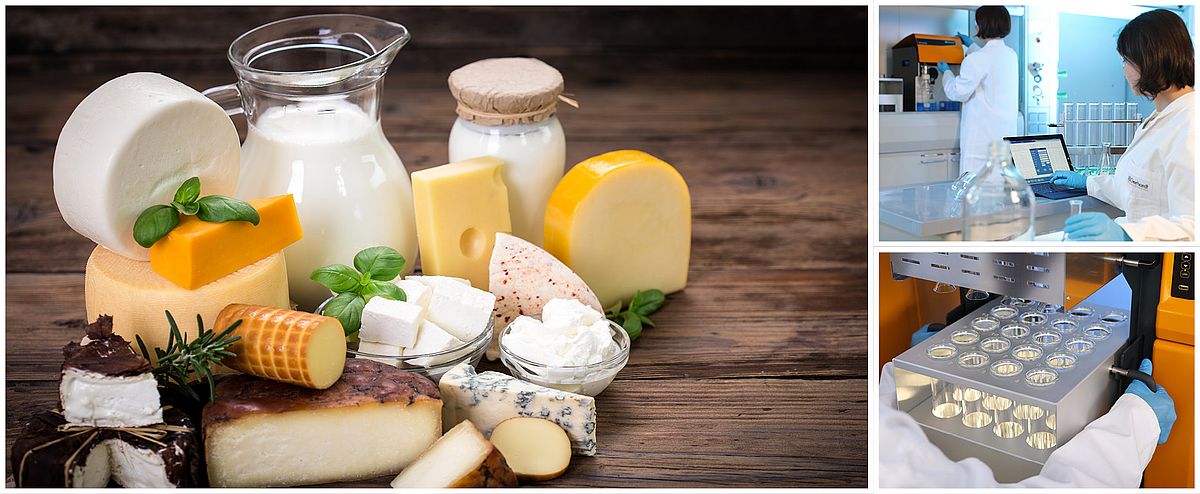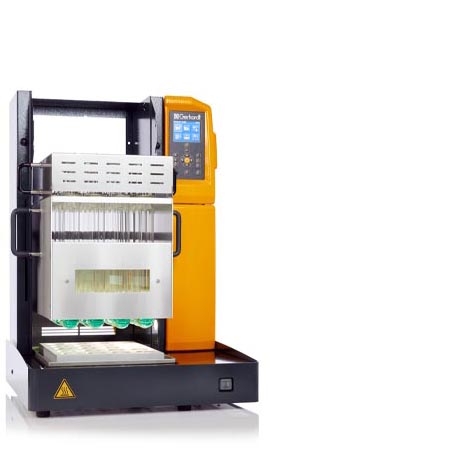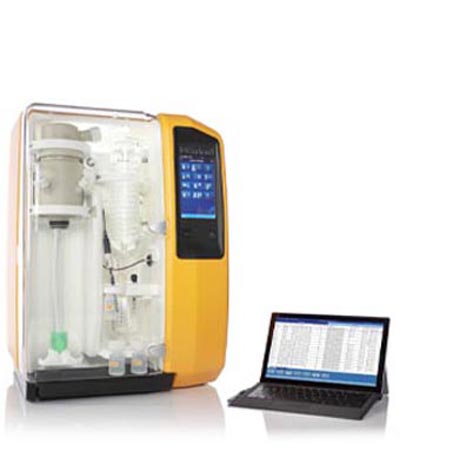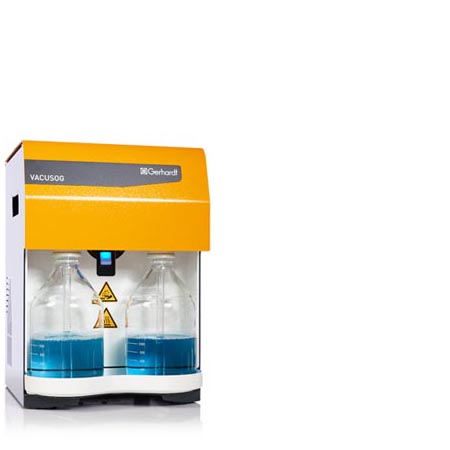Introduction
Milk and milk products are an important part of the daily diet for many people and provide us with essential nutrients. Besides various vitamins and calcium, the protein content in particular is a decisive quality factor of milk and milk products. With a protein content of about 3.4 g, milk is an excellent natural source of protein. Worldwide, milk and milk products are therefore among the most strictly monitored foods. Accordingly, a reliable and precise analysis of the ingredients is essential, whether for raw milk or processed dairy products such as cheese, yoghurt or butter. With the application "Nitrogen/Protein determination in dairy products" based on the international standards ISO 8968, IDF 20 and AOAC 991.20 and corresponding instruments, a fast and reliable analysis is no problem.
Nitrogen and protein determination in milk and milk products acc. to the Kjeldahl method
Sample preparation:
Liquid samples are filled into a beaker and heated to 38° in a warm water bath (40°). Stir carefully in between. Then allow to cool to room temperature. The sample is weighed in with a disposable syringe. Separate solid samples such as cheese from components such as rind so that the edible part of the sample remains. Then shred the sample with a blender. Sample is weighed into the digestion glass using paper weighing boats.
- App note: Homogenization in heat significantly improves your results and your standard deviations.
Digestion:
The sample is digested in concentrated sulphuric acid at 410°. Milk and milk products do not tend to foam much, but should still be heated carefully and the samples should be watched. With the official standards, the digestion time is 2.5 hours, with the method optimised for the automatic KJELDATHERM, the digestion time can be reduced to about 1.5 hours.
- App note: Shorten digestion time by placing the samples in a pre-heated digester.
Distillation + titration:
After digestion, the sample is distilled with the addition of H2O, NaOH and H3BO3. The end point is then determined with a pH meter in the automatic VAPODEST 500. A mixed indicator is not necessary, but can be added for visual inspection.
Calculation:
The nitrogen content is calculated by using the consumption of the titration solution and is converted to protein by means of the referring protein factor. The protein factor for milk is 6.38.
Analytical results for various sample types
| Sample type | Sample amount [g] +/-10 % | Theor. Content [%] Protein | Repeatability for % Protein | Reproducibility for % Protein |
|---|---|---|---|---|
| Cow milk | 4.0 | 3.08 – 3.70 | 0.038 | 0.049 |
| Goat milk | 4.0 | 4.80 | 0.052 | 0.084 |
| Sheep milk | 4.0 | 4.95 - 11.60 | 0.050 | 0.073 |
| Skimmed milk powder | 0.50 | 33.90 - 35.60 | 0.007 | 0.013 |
| Buttermilk | 1.0 | 3.00 - 3.70 | ||
| Yoghurt min. 3.5 % fat | 1.0 | 3.30 - 4.20 | ||
| Hard cheese div. processed cheese | 0.50 | <38 | 0.312 | 0.428 |




